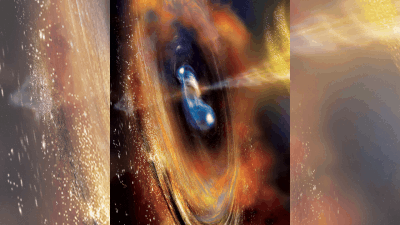The SVOM (Space Variable Objects Monitor) satellite, a collaborative effort between French and Chinese space agencies, aims to explore gamma-ray bursts, powerful cosmic events emanating from star explosions or mergers.
Launch Details
The Long March 2-C rocket successfully launched the SVOM satellite from the Xichang Satellite Launch Center in southwestern China on Saturday, marking a significant milestone in international space cooperation.
Objectives of SVOM
SVOM’s primary mission is to detect and study gamma-ray bursts, which provide crucial insights into the history and evolution of the universe. These bursts emit energy exceeding that of billions of suns and offer information about cosmic environments.
Scientific Significance
Gamma-ray bursts, observed by SVOM, serve as cosmic messengers that enable scientists to peer back in time due to the immense distances they travel. They play a key role in understanding galaxy formation and evolution.
International Collaboration
Despite challenges in space collaboration, such as US restrictions on technology transfer, SVOM exemplifies successful cooperation between Chinese and Western scientific communities.
Challenges and Solutions
SVOM orbits 625 kilometers above Earth, equipped to detect gamma-ray bursts and relay real-time data to ground observatories. Swift response within five minutes allows scientists to activate telescopes for detailed burst observations.
Importance of Gamma-Ray Bursts
Studying gamma-ray bursts offers insights into extreme cosmic phenomena, aiding in testing fundamental laws of physics and enhancing our understanding of universal dynamics.
Multiple Choice Questions (MCQs):
- What is the primary mission of the SVOM satellite?
- A) Study black holes
- B) Explore Mars
- C) Detect and study gamma-ray bursts
- D) Monitor solar flares
- Answer: C) Detect and study gamma-ray bursts
- Where did the SVOM satellite launch from?
- A) Beijing, China
- B) Xichang Satellite Launch Center, China
- C) Kennedy Space Center, USA
- D) Baikonur Cosmodrome, Kazakhstan
- Answer: B) Xichang Satellite Launch Center, China
- Why are gamma-ray bursts significant in astrophysics?
- A) They reveal the presence of dark matter
- B) They provide information about galaxy evolution
- C) They help in forecasting solar storms
- D) They measure cosmic microwave background radiation
- Answer: B) They provide information about galaxy evolution
- What challenge does SVOM face in detecting gamma-ray bursts?
- A) They occur too frequently to monitor
- B) They emit harmful radiation
- C) They are difficult to observe due to their brief and intense nature
- D) They are too dim to detect from Earth
- Answer: C) They are difficult to observe due to their brief and intense nature
- What does SVOM’s rapid response system involve?
- A) Launching additional satellites
- B) Alerting ground observatories within minutes of detecting a burst
- C) Sending samples back to Earth
- D) Transmitting data to Mars
- Answer: B) Alerting ground observatories within minutes of detecting a burst
